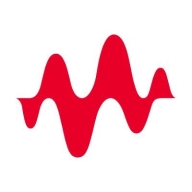

SonarQube Server and Ixia BreakingPoint compete in quality code analysis and network security testing, respectively. SonarQube has an edge in affordable pricing and code quality analysis, while Ixia is superior in network testing capabilities, offering a good investment for security features.
Features: SonarQube Server offers robust code analysis tools, integration with continuous integration systems, and detailed reporting. Ixia BreakingPoint excels in network security testing, offering attack simulation, resilience testing, and comprehensive security assessments.
Room for Improvement: SonarQube could improve in security vulnerability detection, user interface customization, and support for additional languages. Ixia might benefit from simplifying its deployment process, enhancing its user interface, and offering more affordable pricing tiers.
Ease of Deployment and Customer Service: SonarQube Server stands out with its straightforward setup and seamless integration with development workflows. Ixia BreakingPoint, while complex to deploy, is supported by robust customer service, ensuring thorough implementation in secure environments.
Pricing and ROI: SonarQube Server is praised for its cost-effectiveness and attractive ROI for development teams focusing on code quality. Ixia BreakingPoint demands a higher initial investment but offers substantial ROI through its powerful network security capabilities, making it a justified long-term investment.


By simulating real-world legitimate traffic, distributed denial of service (DDoS), exploits, malware, and fuzzing, BreakingPoint validates an organization’s security infrastructure, reduces the risk of network degradation by almost 80%, and increases attack readiness by nearly 70%.
SonarQube Server enhances code quality and security via static code analysis. It detects vulnerabilities, improves standards, and reduces technical debt, integrating into CI/CD pipelines.
SonarQube Server is a comprehensive tool for enhancing code quality and security. It offers static code analysis to identify vulnerabilities, improve coding standards, and reduce technical debt. By integrating into CI/CD pipelines, it provides automated checks for adherence to best practices. Organizations use it for code inspection, security testing, and compliance, ensuring development environments with better maintainability and fewer issues.
What are the key features of SonarQube Server?Many industries implement SonarQube Server to uphold coding standards, maintain security protocols, and streamline their software development lifecycle. In sectors like finance and healthcare, adhering to regulations and ensuring reliable software is critical, making SonarQube Server invaluable. It is often integrated into CI/CD pipelines, ensuring that code changes meet set standards before deployment. This approach enhances productivity and maintains compliance with industry-specific requirements.
We monitor all Static Application Security Testing (SAST) reviews to prevent fraudulent reviews and keep review quality high. We do not post reviews by company employees or direct competitors. We validate each review for authenticity via cross-reference with LinkedIn, and personal follow-up with the reviewer when necessary.